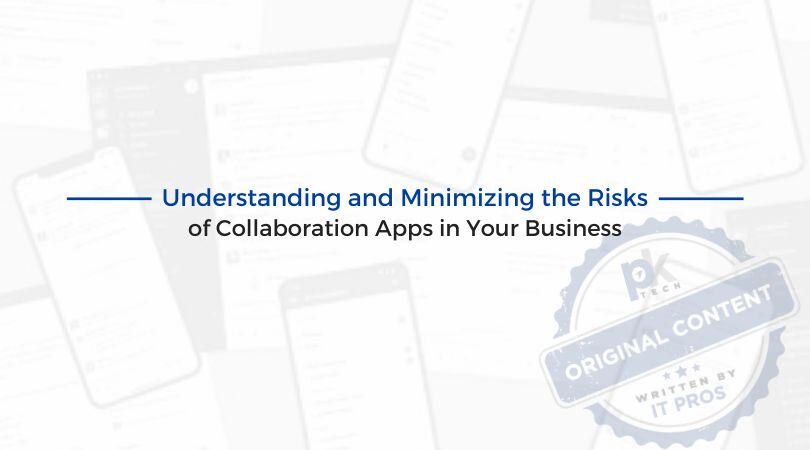8 Best Practices for Getting the Most Out of Microsoft Teams Channels
What is Microsoft Teams, and how can your business be integrating it? We’re so glad you asked.
2 min read
Megan Schutz : Updated on November 13, 2024

In a world of growing remote and hybrid work schedules, collaboration apps have emerged as a way for organizations to stay interconnected regardless of location. If you’ve heard of Slack or Teams, you know what a collaboration app is. In fact, your company probably uses some form of one. Like any new technology, the emergence of collaboration apps has created new security dangers for organizations. Let’s dig in and better understand the risks of these apps and what your organization can do to prevent cybersecurity challenges surrounding collaboration platforms.
Collaborative applications, collaborative software, or groupware is application software designed to help people involved in a common task to achieve their goals. Collaboration tools that enable business communication include Slack, Microsoft Teams, Google Hangouts, Fuze, Lifesize Video Conferencing, and Skype. Collaboration Tools that emphasize project & task management include Trello, Airtable, Asana, Basecamp, Wrike, and Monday.
Within an organization, collaboration tools are typically used to allow two or more people to view and contribute to documents or other content over a shared network. Collaboration apps usually fall under three umbrellas: project updates, management, and monitoring.
Common usages include:
One of the most popular applications, Microsoft Teams, has 270 million active monthly users. Not surprisingly, Covid-19 was a significant driver in the growth of Teams and other collaboration apps (reference).
The risk with collaboration apps is simple: they are not immune to vulnerabilities, despite their vast utility to businesses worldwide. Like any browser-based software, they may have underlying bugs and can be targeted with web-based attacks and phishing attempts. The problem isn’t weak platforms; it’s that solutions like Slack and Teams are not built to stay up with the level of advanced threats targeting modern organizations from cybercriminals and other threat actors.
Even though these weaknesses exist, many organizations still use these channels to share sensitive information. A report found 71% of office workers worldwide admitted to sharing critical and sensitive business data through collaboration tools. That’s a scary statistic. So, what can organizations do to manage this risk?
There’s no doubt virtual collaboration apps have become an integral part of many organizations’ operations today. There are countless ways to effectively use applications like Teams to increase your organization’s productivity. Still, organizations must recognize the serious threat to their security and privacy if these apps are not properly managed.
Collaboration apps will only continue to expand their popularity and reach within organizations. To protect themselves, organizations must monitor potential threats, initiate usage controls, and provide readily available IT service when needed.
Managing your organization’s hardware and software requires professional oversight regarding managing existing platforms or introducing new ones. At PK Tech, we provide managed IT services customized to your business needs so you can spend more time doing what you do best. Get in touch with our team here.

What is Microsoft Teams, and how can your business be integrating it? We’re so glad you asked.

Azure Virtual Desktop (AVD) has gained significant attention as a remote work solution, but is it the right fit for CPA firms? In a world where...
-3.jpg)
Whether it’s the April 15th deadline, the October extension deadlines, or all of the corporate quarterly deadlines in between, accounting firms are...